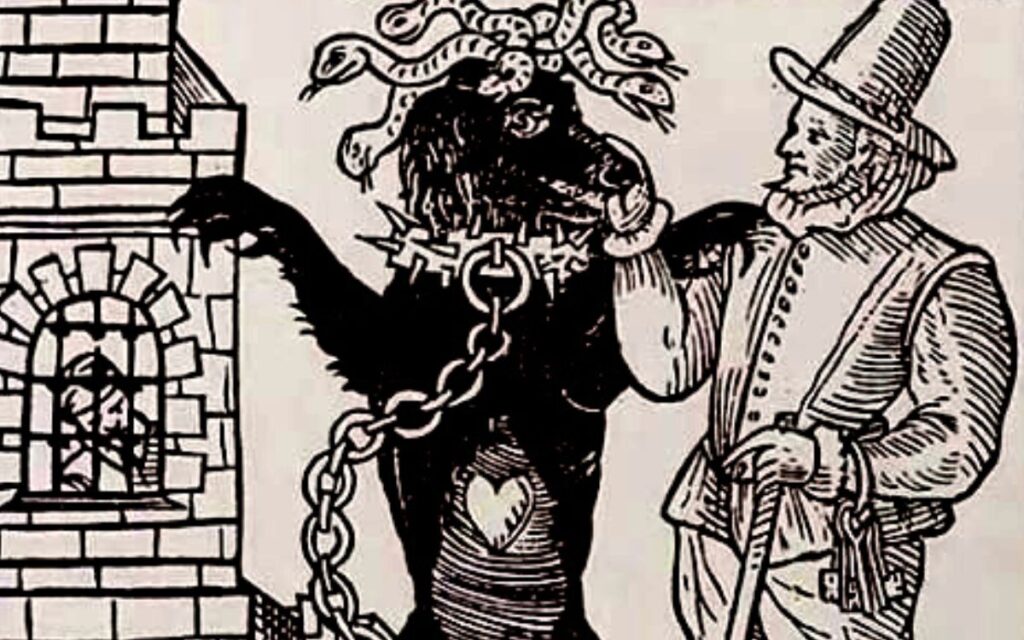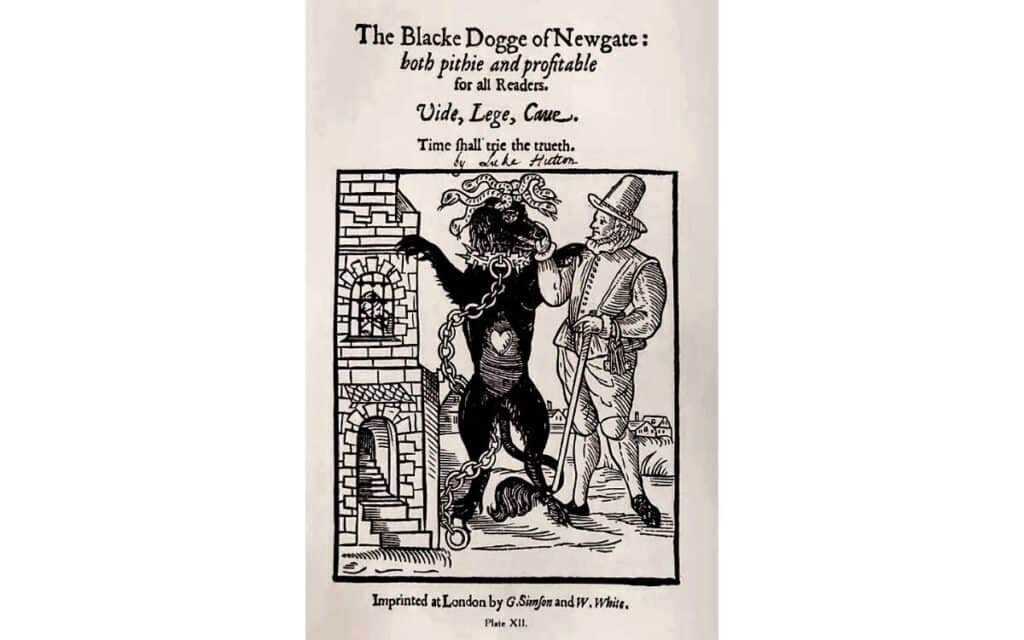From cannibalism during a famine to the legend of a phantom black dog haunting its walls, LES HEWITT explores the dark past of London’s Newgate Prison, one of England’s most notorious gaols…

For almost a millennia, the infamous Newgate Prison stood upon the site of the current Old Bailey. The number of hardened criminals, vicious minds and warped perceptions of those that called the notorious institution home are likely to run into the thousands.
During its long history, scandals and disputes have tainted – or even enhanced – its reputation. While prison life may have had a reputation of being harsh or severe in more recent times, there is little doubt that strides have been taken in order to facilitate a more humane level of rehabilitation and conditions, there can still be times when things get out of hand.
Picture a time long before political correctness, when all manner of people requiring more specialist care – criminals or those suffering from mental health issues – were roundly treated and viewed upon. It was often as simple as locking them away and forgetting about them.
Such was the case during Newgate’s long established history. Perhaps the very first major scandal that hit the prison occurred during the reign of Henry III. Across much of England, a famine had taken hold severely. Those unfortunate enough to be incarcerated within Newgate were actually left to fend for themselves. It was only natural that cannibalism was the solution that the inmates came up with.
The more notorious were likely to have maintained dominion over the multitude by targeting those that were ‘weaker’ or ‘timid’. Perhaps it was an idea or suggestion that swept the whole prison, but many may have baulked at lowering themselves to such depravity. Those that were unwilling or unable to succumb to a barbaric practice in all likelihood succumbed to it in other ways. Legend has it that the guards and wardens did nothing to prevent matters from getting out of hand.
It was this darker moment of the history of the prison that gave rise to one of its most infamous residents. One newly arrived inmate, said to be a scholar but without his identity ever being revealed, was considered too weak in the extreme. This poor soul quickly became just another statistic of the famine sweeping the nation at that time.
What nobody inside the prison was aware of was that this new unnamed prisoner was actually convicted of sorcery. Almost the instant that he arrived, the new convict was set on by a gang of established inmates and quickly devoured. Those that savoured this latest ‘good meal’ barely had time to digest matters before the consequences of their actions began to catch up with them.
At least according to one legend.
Black Dog of Newgate Prison
That very same night, an ominous black dog was first seen within the grounds of the prison. Conflicting reports of the time insist that this creature eyed the convicts who cannibalised the sorcerer with an apparent ravenous hunger, or appeared with the sole intent of tearing them to pieces. Other accounts firmly believe that the animal was there just to frighten or intimidate, stalking those responsible.
Regardless of motive, fear spread like wildfire throughout the prison. It didn’t take long for a riot to break out, costing the lives of numerous guards in the process. Prisoners absconded. Some as a direct result, others on circumstance.
Those who firmly believed that the black dog was some sort of omen or portent, only survived a matter of days on the run before they were discovered horribly mauled. Evidently, something had hunted each one down and left their remains in a feral state; plundered by an unknown animal predation.
This was not just an isolated incident either. Reports continued over the next several centuries. At any given time, another report of a silent black dog would be made. Every sighting appeared to follow the same rule. The dog would be seen, but never acted. It was almost as if the phantom canine was merely there to keep current prisoners in check. It was almost like the presence of the animal was more akin to a traditional guard dog than an omen of ill-intent.
The very first mention of this legend occurred back in 1596 when a book called The Black Dogge of Newgate: Both Pithie and Profitable for All Readers was published by Luke Hutton. It was generally believed that the author was, in fact, a former inmate of the prison. Nobody can accurately pin down the time that the account was written though.
Fewer still are convinced that the given account is actually true. The way this book was written suggests that the tale given is similar to one used over a long established campfire. It centres around an exchange between two men; the author and another ‘poore-than-gut-fellow’. One is a firm believer in the tale, the other isn’t.
The conjecture on the validity of the tale does offer substance either way. There was a genuine famine during the tenure of Henry III that affected much of the UK.

However, a belief in witchcraft/sorcery during this time was not as hysterical. Out and out heresy was considered a much more serious offence in the eyes of the Church. It took several more decades before witchcraft achieved the same notoriety. Merely practising sorcery would not have likely resulted in a custodial sentence, particularly in a prison as notorious as Newgate.
Pope Alexander IV actually issued a papal directive in 1258 for all Inquisitors to avoid investigations into alleged sorcery whenever possible.
The book was more likely written during a time when witchcraft was considered more taboo and a crime against the Church. The Black Dog was an embellishment added into the narrative. Not exactly a hoax, but more like artistic licence.
Perhaps the real story of his book was to draw attention to the conditions and treatment of those inside Newgate itself. The second man in the conversation throughout the book may believe that the ‘black dog’ was actually a stone found in a dungeon. This stone was said to be large and black in colour, often nicknamed Limbo. After sentencing, prisoners were brought before it and those more desperate or intent on escape would deliberately smash their own head against it. Some deranged inmates were believed to have done similar self-harm.
It took another decade before additional details of the grim reality of life inside Newgate would surface. This came directly from another inmate, John Partridge. Partridge was hanged in 1609, but prior to his execution, he spoke with a cleric called Richard Thomas. Partridge did reveal some intimate details of what conditions were like.
According to Thomas, prisoners were constantly manacled and guards often ignored cries for food. Some began to eat their own clothes in order to stay alive. Not many prisoners, it would appear, ever made into their scheduled execution date.
Is there a phantom black dog that roams the grounds of the old Newgate prison? The belief in it is circumstantial at best. When the entire prison was demolished a century or so ago, a lot of the accounts went with it into history.
Only a few remnants of the prison remain to this day, but occasionally a story will surface about a shapeless form in or around these remnants.







